Save The Children recently gave NZ families the opportunity to engage their kids in learning why good food matters through their Good Food Guide. Inside was a seed pack and recipes, plus information on how to help families and children overseas get the good food they need too.
We asked three Kiwi mums to let us know what they thought of the Good Food Guide and Seed Pack.
Kids in the garden
Why try to explain miracles to your kids when you can just have them plant a garden. – Robert Brault
As food prices increase, seemingly by the week, the focus of many households on being able to provide enough food to feed their family has never been stronger. In New Zealand, we are incredibly blessed with pretty much perfect conditions for growing a wide variety of crops. This summer has brought into sharp focus for many the impacts that future climate changes may bring. However, compared to other countries suffering with even greater issues with heat, rain and other extreme weather conditions, New Zealanders remain in an exceptionally privileged position of being able to grow much of their own food. Growing a few of your own crops (herbs, vegetables or fruit) remains, to me, one of the easiest and most accessible ways of being able to top-up your family’s nutrition, whilst reducing your carbon footprint and with the added bonus of being able to save some coin on your weekly shop.
Now, don’t get me wrong, having kids in the garden with you, especially as a novice gardener yourself, isn’t that easy. My kids remove seedlings instead of weeds when weeding, they get a little crazy with the seeds when planting and things randomly sprout all over the place (like 8 butternuts which are currently sat in our garden bed that I had no idea were there), squeal when they uncover a worm or a skink, and they eat most of the strawberries before I get a chance to have a taste myself. But they really enjoy being out in the garden with me, and ask to go out there. It is a happy place, one which gives them as much pleasure as it gives me. They love seeing how food grows and different stages of its development, they love tasting the fruit and veggies straight after they are picked, they love watching the bees and butterflies (and we’re working on the worms) and they love being able to truly participate in something, and not just watch from the sidelines. This is why I believe gardening with kids is so valuable – a better understanding of food and the environment, better nutrition and more willingness to try fruit and vegetables, empowered kids who take ownership, as well as more patience and acceptance of mistakes (that one is for me too if I’m honest …). It’s also why I love getting my kids in the garden with me, even if a deep breath is sometimes required! So I was excited to try out the Growing Healthy Kids seed kit from Save The Children as a project which my kids could help me with from start to finish.
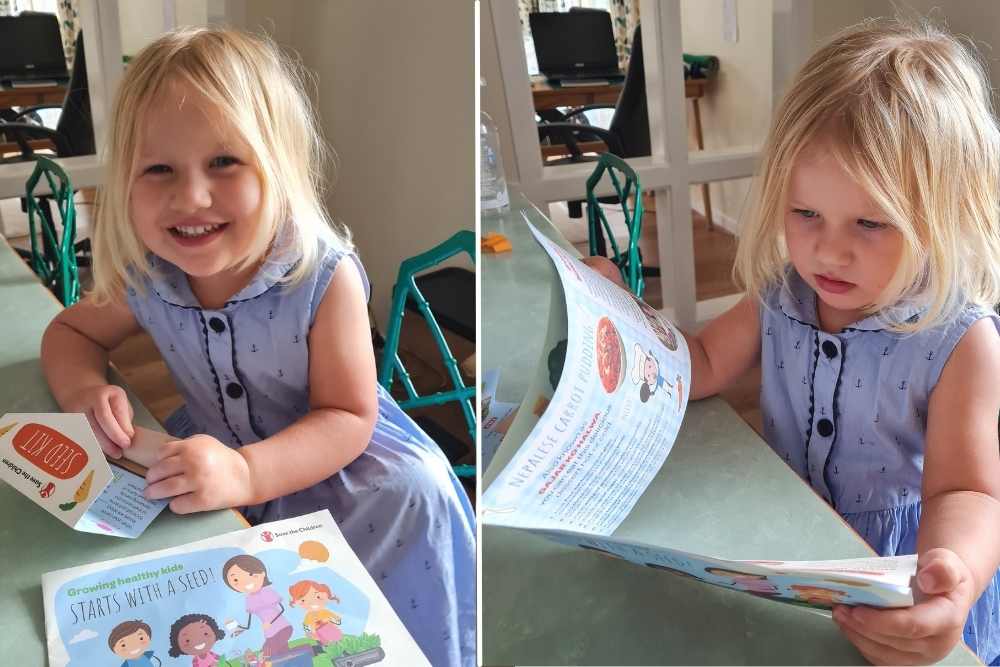
The kit contains a Growing Healthy Kids guide, as well as a pack of carrot seeds to get you growing. The guide is presented in a really family-friendly way, with heaps of information but also loads of pictures, making it great for kids and adults to share together. As soon as we received the guide my kids (aged 6 and 3) started reading the booklet together, loving looking through the pictures and my eldest reading most of the words to her younger sister. The DIY guide, which is also found in a less detailed version on the seed packet for when you come to plant the seeds, was set out to encourage even the most novice gardener to have a go, and the page giving details on which vitamins and minerals a body needs to grow prompted some really interesting discussion about the things we liked to eat which contained them, and what would happen if we didn’t eat enough.
But the page my kids loved the most was the recipe page. The pictures looked so enticing they wanted to try them all, however we settled on making the Nepalese Carrot pudding and the baked carrot chips. The chips were delicious – in fact, the first batch was eaten so quickly (approximately 30 seconds), I had to make another. They were a lovely mix of sweet and savoury, with a really great crunch, and would be perfect for a snack box or lunchbox. The Nepalese carrot pudding was a little more involved to produce, but still pretty simple. I have to say, I was a little dubious of how it would turn out, but it was sweet and creamy and subtly spiced. My kids gobbled it up, and have asked to make it again, so I will definitely be keeping that recipe.
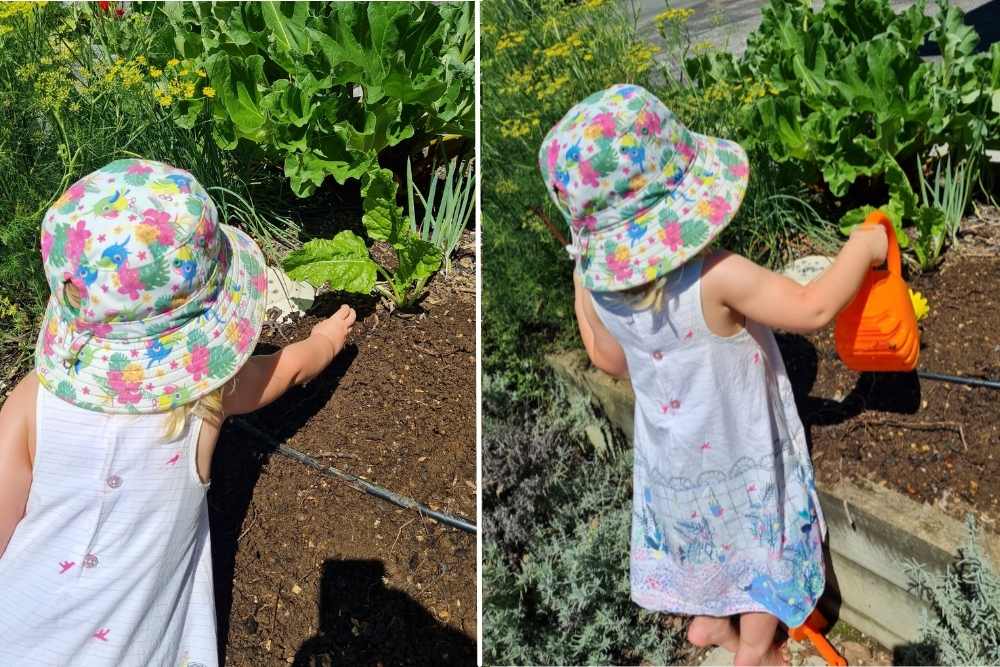
In addition to the information for parents and kids in New Zealand, the guide also has information on the ways it has helped families and communities across the Pacific with tools and expertise to become more productive and also resilient in the face of a more extreme climate. In particular, the kids loved hearing about how Mr Chhuon Yi went from growing 120kgs to 1329kgs of cucumbers, enabling him to send all of his kids to school. My eldest daughter also loved Gloria’s story about growing food at school after a cyclone destroyed her and many other families’ gardens. Growing food at school means kids have plenty of food to eat at lunchtime, and by choosing stronger crops this will be able to continue into the future, no matter what the climate throws at them. She loved this story as it reminded her of her own school veggie garden, and we talked about how cool it was that the school is able to provide food, as well as how important it was to have a full tummy to learn and play. These types of projects are clearly hugely valuable and based on making communities more resilient and able to grow stronger together towards a future that provides opportunities for everyone.
As my 3-year-old is currently not at Kindy, I decided to save the seed packet as a project for us to do whilst her sister was at school. We were lucky enough to have some space in our veggie bed to plant these seeds, but there were plenty of other options such as using a pot or a small area in your garden if you didn’t have one. Once we had cleared a space in our veggie bed and had a good read of the instructions, we set to work to plant the seeds. At first, my daughter couldn’t believe that the seeds I showed her would become carrots like the ones in our fridge. The instructions were easy enough that, with some guidance, my daughter was able to complete the process herself. She loved making a channel for the seeds and sprinkling them inside and covering them back over with soil, but her favourite activity was watering the seeds in afterwards – because what child doesn’t love a bit of water play! She was so proud of her work that she has been going outside every day since to water them and check to see if they have sprouted yet, and I know she’ll be so excited when they do.
Overall, this kit was really well planned and thought out, accessible for a wide variety of ages and gardening abilities, and really engaging for my kids wanting to grow, and make, some food. The seed pack was such a fun activity for anyone to try, no matter how much space you have, and has the bonus of being able to watch and then harvest your own food to eat as a reward. I would really encourage anyone to give it a go, and maybe you will plant a life-long love of growing in your children.
Katie – Follow Katie’s frugal journey of gardening and home-cooking at @thatfugalmum on Instagram.
Carrots and carbon footprints
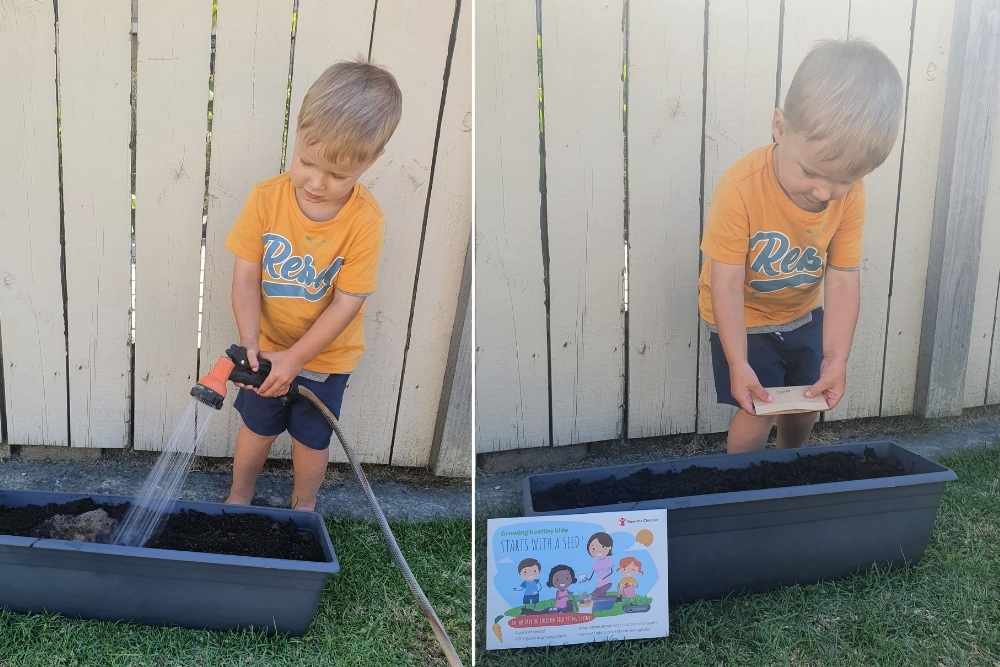
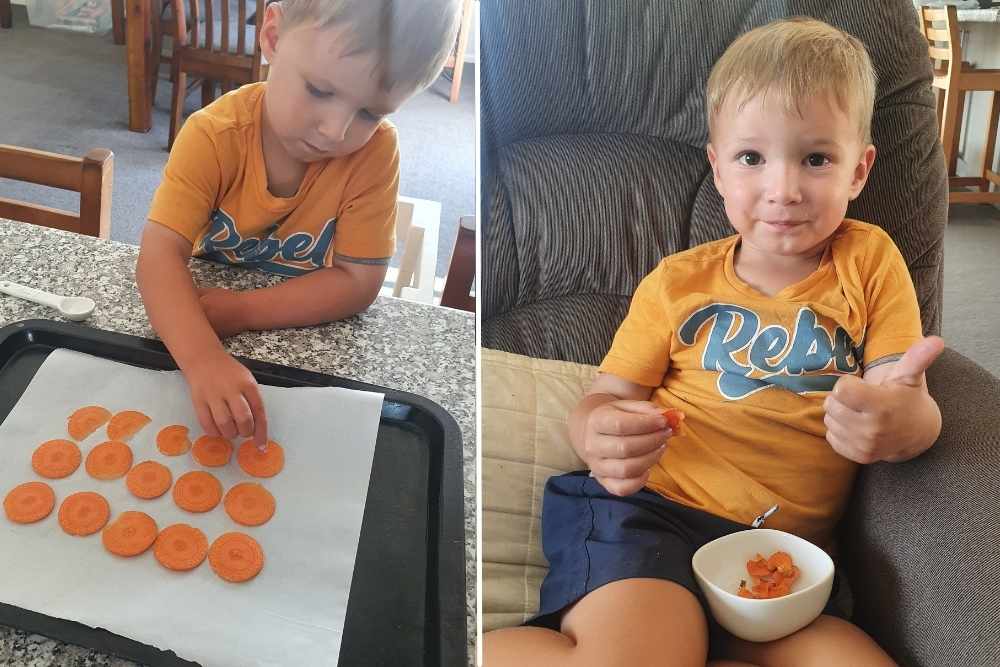
My son chose to make the carrots chips (because chips are a favourite of course!). He helped me slice them very thin and he kept a close eye on them when they were in the oven. Once they were done we enjoyed them together with hummus!
Emmeline
The benefits of growing our own
Our seed kit from Save The Children included an information booklet and two packs of carrot seeds. The seeds were neatly packaged with instructions on how to plant them step by step and were easy for kids to understand. The kids were able to follow through and plant their seeds successfully without much help at all.
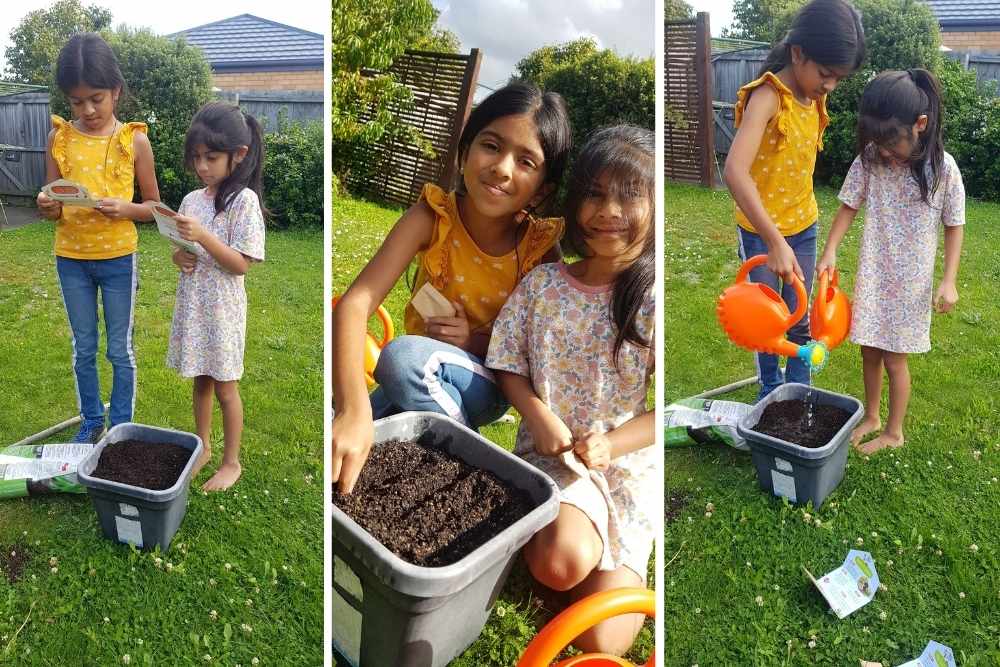
We read through the booklet together and learnt about the benefits of fresh fruit and vegetables as well as the amazing work Save The Children has done in Cambodia, Nepal and Fiji to help families struggling with poverty and unable to educate their kids because of these challenges.
Save The Children’s involvement in empowering these families through equipping them with skills and giving them the resources to be able to sustain their homes and meet their basic needs has been incredible and enabled them to take care of their families financially as well as educate their children.
My girls (aged 5 and 8) and I discussed more about poverty in other countries (as well as where I am originally from, South Africa); what causes it, as well as the current rising cost of food we are experiencing at the moment in New Zealand. What would we have to do if we could not afford to buy food?!
We also discussed the benefits of being able to grow our own food and being able to feed ourselves – considering the rising costs at the moment of groceries and especially fresh produce with a cauliflower just last week being sold for $14.99. We’re blessed to live in a country that has healthy ground, where crops flourish.
In this day and age of technology and focus on indoor entertainment, a welcome change was being able to get out in the dirt and explore, engage, and acquire skills that will benefit them now as well as generations to come.
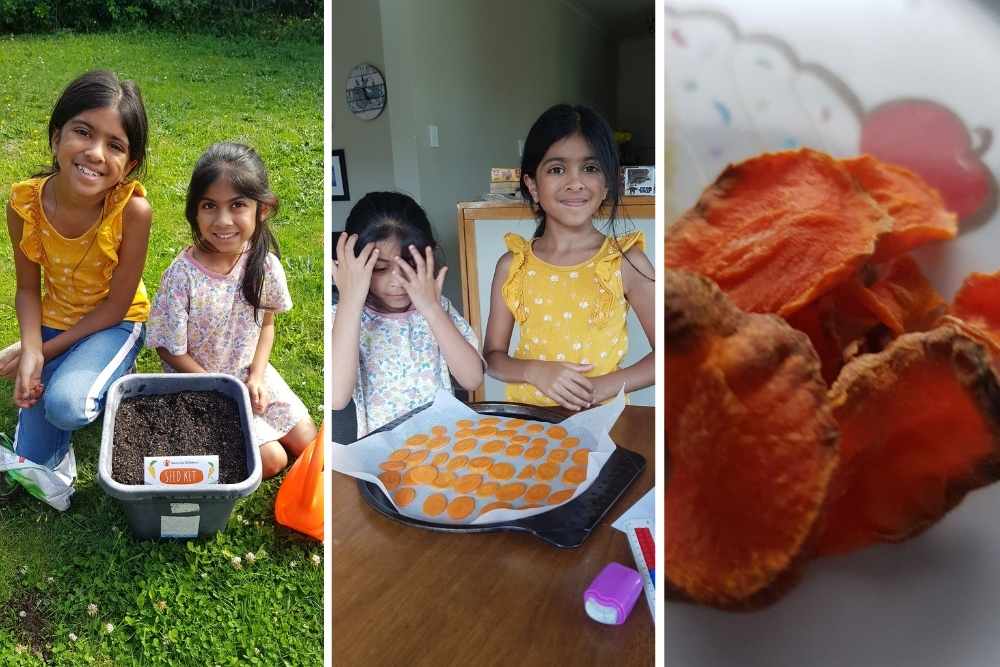
The recipes in the book were easy to follow (we made carrot chips) and handy to teach about the versatility of carrots as well as their nutritional value and informing kids of the reasons we as parents insist, they get their 5 a day of fruit and vegetables.
This is a great initiative by Save The Children and definitely one to support not only for our kids but for the help of the many lives that are touched and changed by this organization.
Michelle
To find out more about the work of Save The Children visit their website.

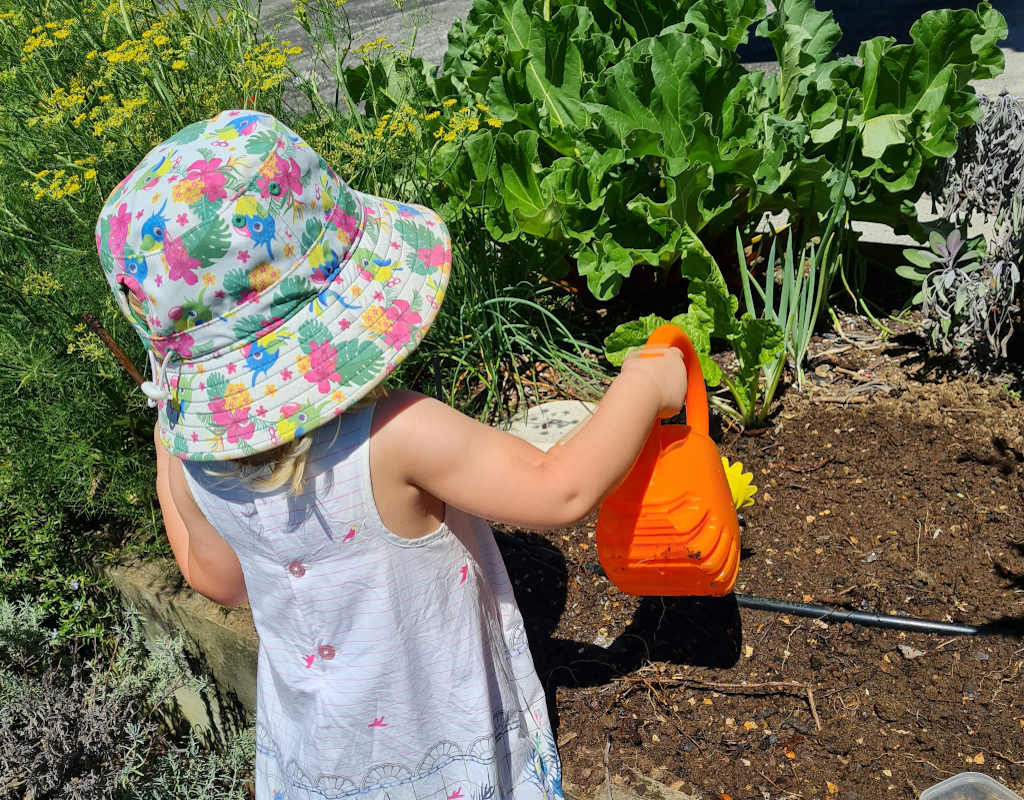
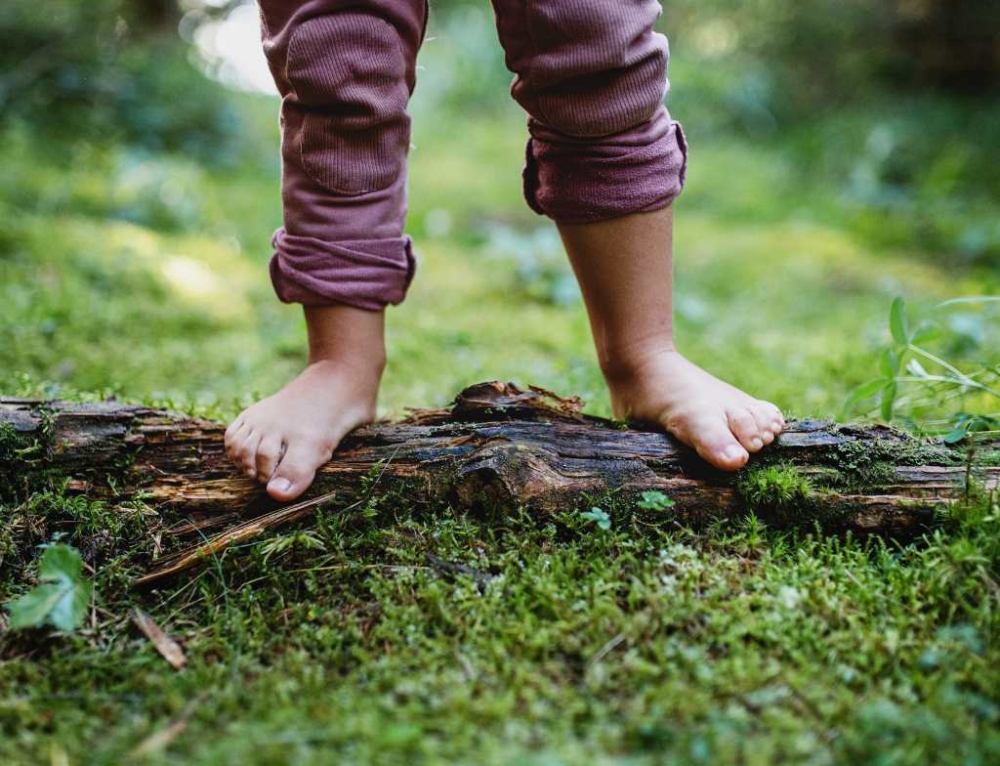



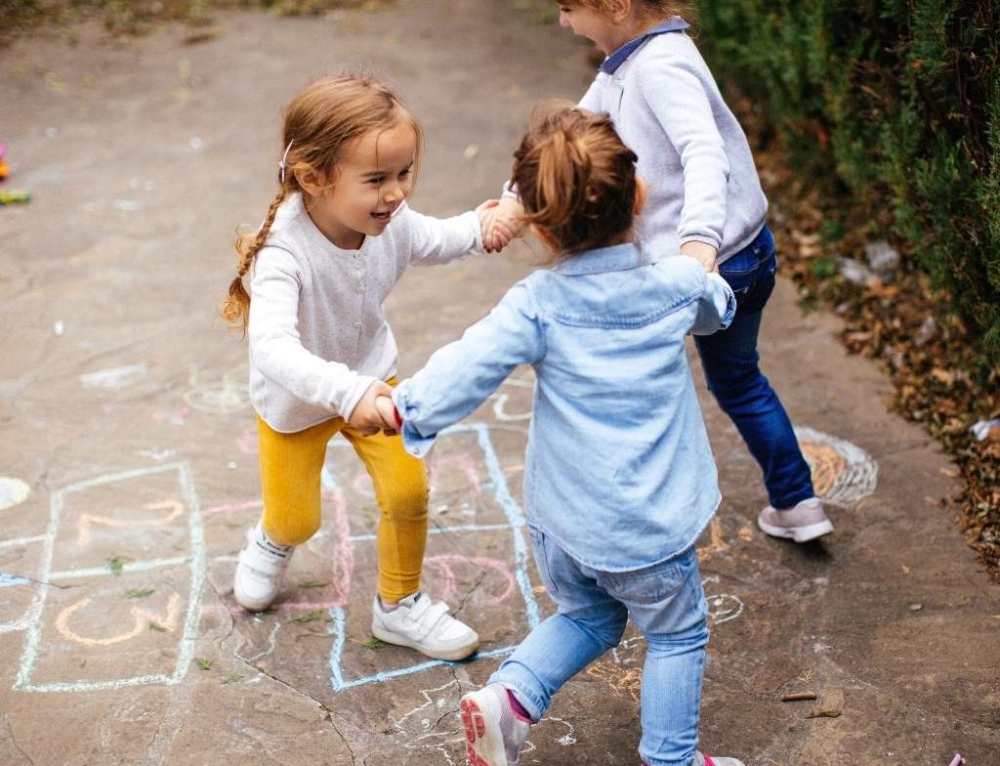
Leave A Comment
You must be logged in to post a comment.